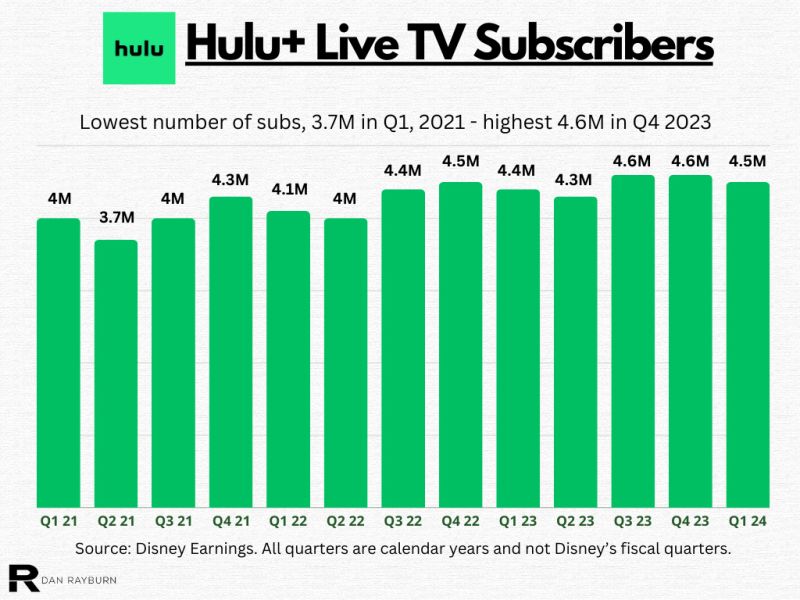Hulu+ Live TV Sub Chart Show Little Growth Over Three Years
In Q1, Verizon, Comcast, Charter, Altice, EcoStar and WOW! lost 1.55 million pay TV subscribers, Hulu+ Live TV lost 100,000 subscribers, Sling TV lost 135,000 and Fubo lost 110,000 subscribers. Combined, that’s 1.89 million live TV losses in Q1. We don’t know how many subscribers YouTube TV gained or lost. But it’s a safe bet that YouTube didn’t make up the nearly 1.9 million difference.
While Peacock and Paramount+ don’t have a live linear channel lineup comparable to pay TV, they do have live content. Peacock gained 3 million subscribers in Q1, and Paramount+ added 3.7 million. Consumers are not tuning out live; they are just moving from a deep linear channel lineup to specific live content. Max gained 700,000 subscribers in the US in Q1, but we don’t know how many added the B/R Sports Add-On for live sports.
We all know sports content drives live TV viewing and keeps consumers from cutting pay TV services faster, but so far, vMVPDs are not benefiting from a steady stream of new sign-ups. Yet, some in the industry continue to want to imply that Hulu and other vMVPDs are doing better than they are. Someone who covers the streaming space recently said in a LinkedIn post, “…Hulu+ Live TV, in particular, is adding customers at a steady clip.” That’s simply not true.
Over the last three years and one quarter, Hulu+ Live TV has gone from a low of 3.7 million subscribers to a high of 4.6 million. In the previous two years, the number of total subscribers hasn’t deviated by more than 10% and in the past five quarters, that number dropped to 6.5%. Six quarters ago, Hulu+ Live TV had 4.5 million subscribers. Disney just reported the same 4.5 million subscribers at the end of Q1. These numbers tell the story; anything else is just hype and poorly worded-posts with vague references. Most often, the person writing the post doesn’t know the numbers.
Looking at pay TV cord cutting figures from last year and Q1 of this year, I estimate the pay TV market will lose about 5 million subs combined in 2024. That would be a loss of about 7% of total pay TV households in the US.

